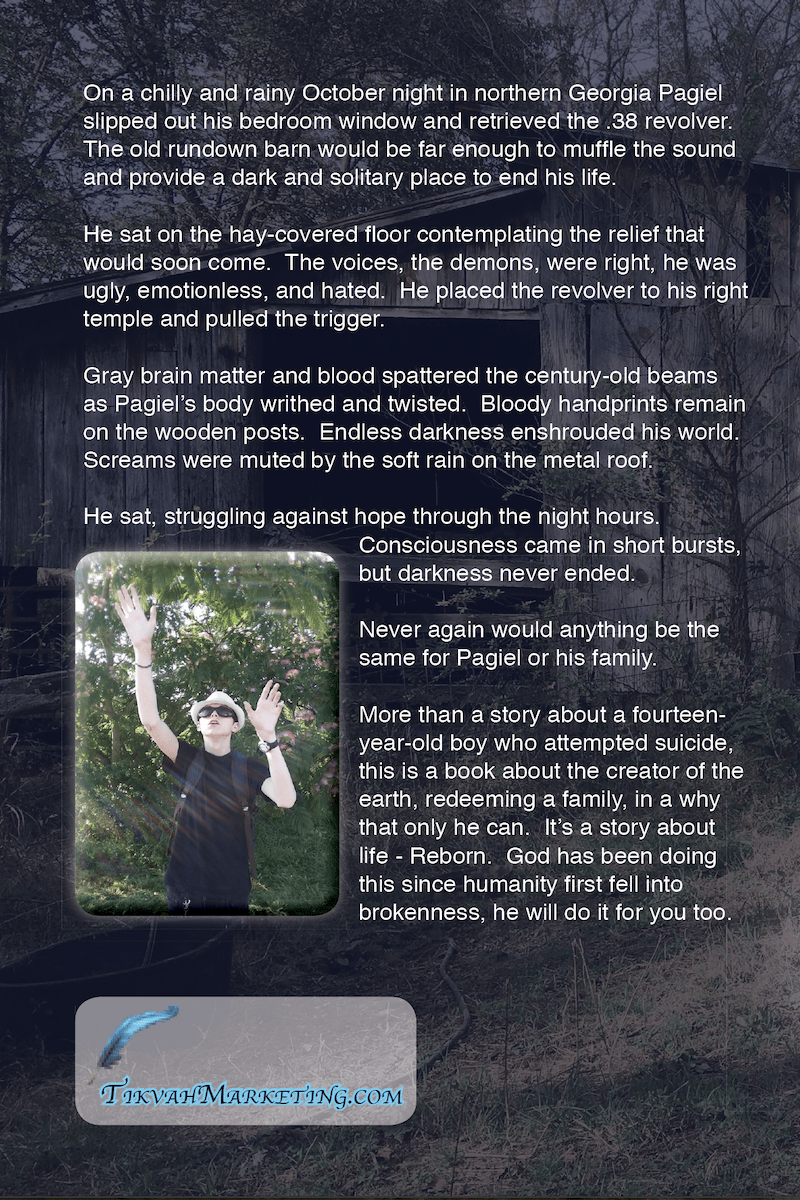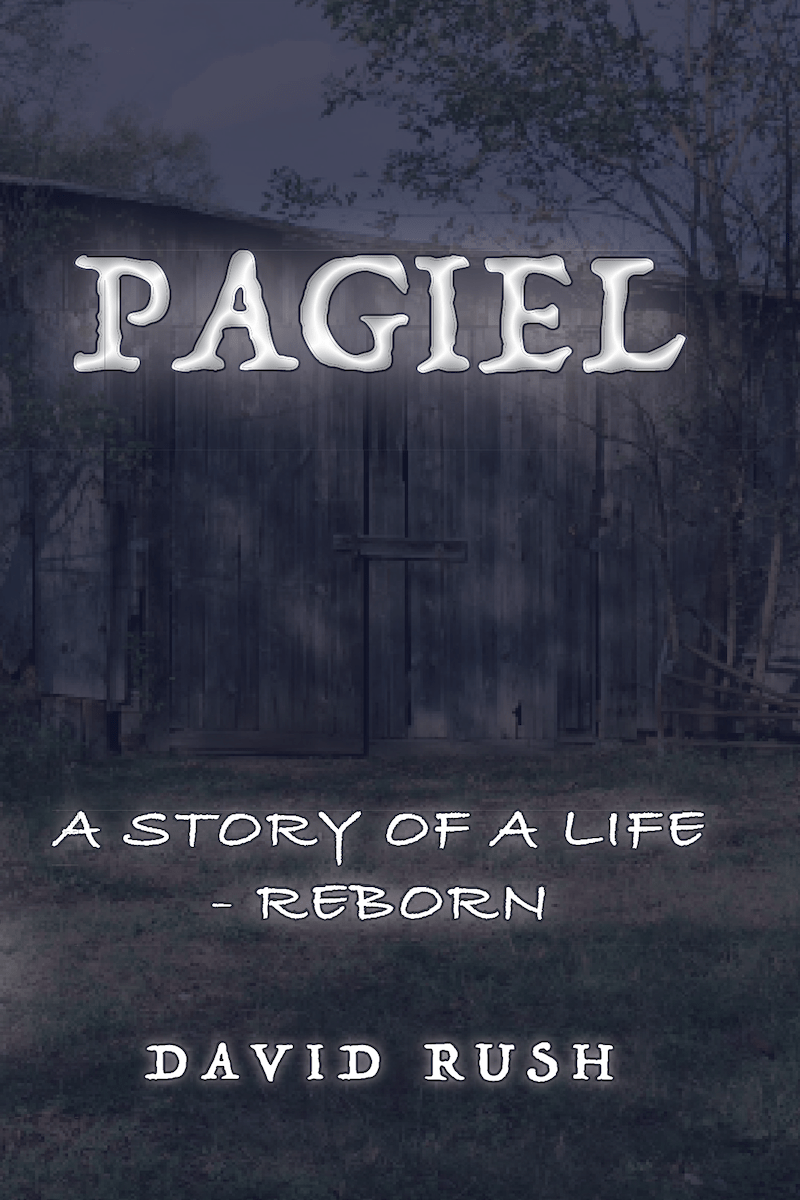He sat on the hay-covered floor only a few moments contemplating the relief that would soon come. The voices, the demons, were right. He was ugly, emotionless, and hated. “Just end it,” they said.
He placed the revolver to his right temple and pulled the trigger.
The lethal bullet passed through directly behind his right eye, expanding and expelling the eye from its socket, then intersected the frontal lobe of the brain before exiting the opposite side of his skull, just behind his left eye.
Gray brain matter and blood spattered the century-old beams as Pagiel’s body writhed and twisted. Bloody handprints still remain on the wooden posts to this day. His body clung to life, even when his intention preferred it to end. His right eyeball dangled from the exploded cavity of his face. Endless darkness enshrouded his world. Screams were muted by the soft rain on the metal roof.
He sat, struggling against hope through the night hours. Consciousness came in short bursts, but darkness never ended.
Never again would anything be the same for Pagiel or his family.
This is a story about a young man who attempted suicide. But, it is not a book about an attempted suicide. It is not a “how to” story about beating depression. It’s not even just an exciting true story about new life in the face of imminent disaster. Yes, I suppose this includes all those ingredients, much like a cake includes a pinch of salt, but a cake isn’t about salt.
This story is so much bigger than salt. So much more than another book on suicide. This is a book about the creator of the earth, redeeming a person, in a way that only he can. So when you break this down, this isn’t even an unusual story. God has been doing this since humanity first fell into brokenness in the Garden of Eden.


